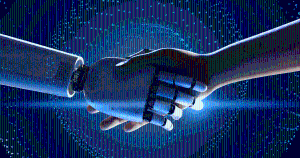CdE Manufacturer

How UX/UI Modernization and Redesign Can Drive
a Company’s Growth
The Context
In a highly competitive and constantly evolving technological landscape, offering an exceptional customer experience is a key factor for business success. In such an environment, the network component manufacturing industry, which ranges from routers and switches to firewalls and IP telephony products, stands out as particularly dynamic.
According to figures from Grand View Research, the global network equipment market size was estimated at 144.7 billion USD in 2022 and is expected to grow at a compound annual growth rate (CAGR) of 3.7% between 2023 and 2030. What’s more, the research firm Statista predicts that market revenue from network infrastructure will reach 197.8 billion USD in 2024.
Manufacturing companies within this industry face constant pressure to stay ahead of the curve and adapt to the growing demands of their customers. This happened for one of the world's leading companies in the production of network components, which was facing a significant challenge: its reverse logistics system (product return) —more than 10 years old— had been become obsolete. The tool was outdated, complex and confusing, in addition to having deficiencies for the user. It was originally designed to function on desktops and even though mobile usage was possible, it did not offer a pleasant user experience with that type of access. All of these factors negatively affected the company's operational efficiency.

Faced with these issues, the company decided to undertake a technological modernization plan that would facilitate the process of requesting and monitoring the return of products, while improving the mobile application.
NEORIS, recognized by this client for its experience in innovative technological solutions, was selected to lead the project. We focused on redesigning and modernizing the system to substantially improve user satisfaction and productivity in the company's global operations.

The Challenge
In an industry where innovation and agility are essential, this situation represented a considerable risk to maintain and strengthen its leading position in the market.
The tool they had been working with for years was oriented to the system and not to the user, so it was important to establish instructions and guidance so that the user would properly understand each step of the process.
The system presented the following areas of opportunity:
- Provide the user with the necessary information so that they know that they can easily make a partial return of an order, in addition to teaching them how to do it.
- Create a more modern and intuitive design.
- Provide clear instructions to users in the different areas of the application.
- Minimize repetitive entry of information in multiple sections.
- Optimize time needed to locate packages.
- Organize information to avoid doing multiple tedious tasks.
- Facilitate navigation and understanding of the progress of the product return process.
Our Proposal
With guidance from our UX and DDC team at NEORIS, we proposed a complete redesign of the system the company used.
The process included research and analysis of the user experience, leading to interface redesign aimed at reducing complexity. This enabled us to optimize the user experience with UX/UI best practices and eliminate pain points when the user engaged with the application.
The proposal included:
- Creation of a dynamic system: Adaptable and responsive to different languages and roles (for desktop and mobile devices).
- Simplification and usability: Help reduce complexity and give users the ability to navigate and search for specific workflows and products.
- Ability to undo and redo: Allow users to correct errors, without having to contact support.

The Solution
To address the challenges presented by the reverse logistics system, NEORIS implemented a comprehensive solution focused on user needs. The strategy was developed in different phases, ensuring that each stage of the redesign was aligned with the real expectations and requirements of the end users.
Discovery
The first step was to deeply understand the users, how they interacted with the system and what their pain points were. To do this, a team made up of experts in UX Research, UX Design and UI Design was in charge of carrying out more than 24 interviews and usability tests in 6 different countries, covering the 4 main roles involved in the product return process.
This qualitative approach allowed us to obtain a detailed vision of the needs and opportunities for improvement.
Investigation
Heuristic analysis tests were carried out in 7 countries, through which 27 good practices and 39 areas with opportunities for improvement were identified. These tests consist of using a technique to evaluate the usability of a system of interfaces and processes.
Ideation
Having established a clear understanding of user needs and problems, the UX team moved into the ideation phase. During this stage, a formal and functional analysis of the system was carried out, auditing the flexibility of the services to ensure that they could deal with various situations, skills and needs. This analysis allowed us to specify the project design, guaranteeing that the proposed solutions were not only practical, but innovative.
Execution
The final design of the system was based on concepts that are familiar and accessible to users. The interface was developed to reflect similarities with real-world situations, facilitating easy transition and intuitive use of the system. Clear and appropriate language was used, adapted to the type of system and the different user profiles that were identified.

The Results
The implementation of the solution proposed by NEORIS generated a series of positive and tangible results that significantly impacted the operation and satisfaction of the tool's users. Among the main results that stand out:
- Increased productivity: The simplification and improvement of the usability of the system produced a notable increase in the operational efficiency of users.
- Reduction in support center calls: The intuitive new interface and its ability to undo and redo actions allowed users to solve problems more autonomously, reducing the need for technical assistance.
- Increased completion rate of returned products: The optimization of workflows and clarity in procedures and instructions increased the return rate of completed products.
- Global implementation: The system has been deployed to over 21,000 users in multiple countries, including the United States, Japan, India, Australia, the United Kingdom, Ireland, Portugal, the Netherlands and Canada, with support for multiple languages (English, Japanese, Hindi, Irish, Portuguese, Dutch).
- Accessibility and usability improvement: The platform became more accessible and easier to use for users in different parts of the world.
- Increase in customer satisfaction: Usability tests (SUS) resulted in scores of 89/100.
- Modernization of the interface design: The new platform offers a series of UX/UI improvements:
- Clearer and easier to understand interfaces in the different sections of the application.
- Repetition of data is avoided and the call to action was improved.
- New responsive design, adaptable to any screen.
- Intuitive navigation and screen flows.
- Less cluttered screens.
- More than 80% of returns are made through the new tool, demonstrating the adoption and effectiveness of the improved system. Fewer steps are required to make return requests.
- Shipment summary and details screen.
- Download Center.
Testimonials
“The response time to our queries is extremely fast. Their understanding of our business is beyond expectation from a vendor and the turnaround to fix defects and implement enhancements is the quickest I’ve ever seen. They engage with our carriers and with our internal teams in a cross-functional way that enables us to work better and more efficiently.”
Client Service Logistics and Operations“NEORIS has a “can do” attitude. The reaction time is lightning fast, without creating any kind of obstacles in the process. What I have also noticed is that NEORIS doesn’t just execute what they are asked. They listen, understand the issue, and often have their own ideas and solutions.”
Manufacturing Engineer“The project was an excellent challenge, since it was solved in the best way. We worked with interactive tools such as collaboration boards, virtual calls and with prototypes simulating the experience for clients who are in the United States or Asia, arriving at a product with a completely redesigned experience.”
Miguel Ríos, NEORIS UX Lead.








